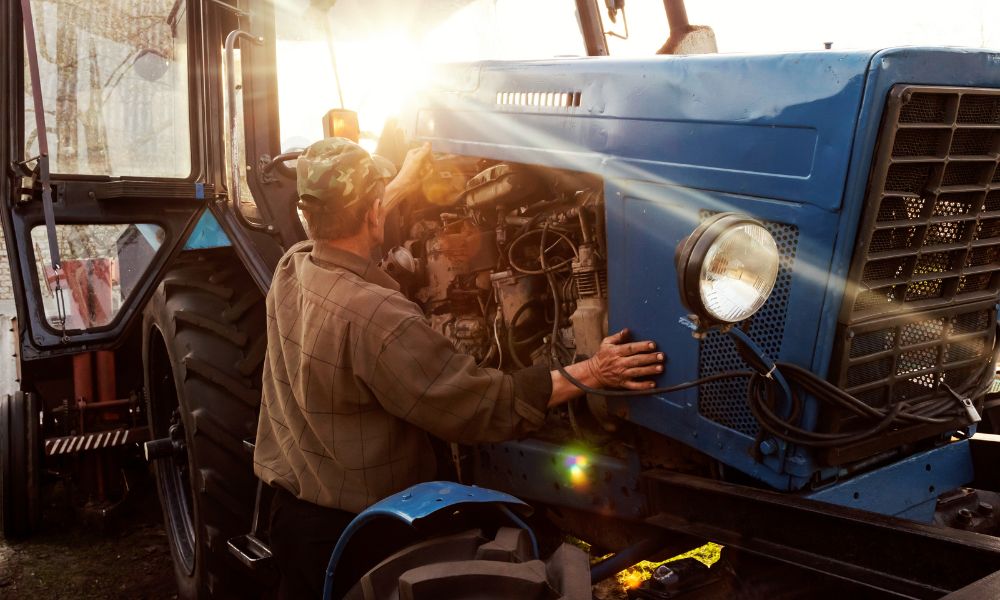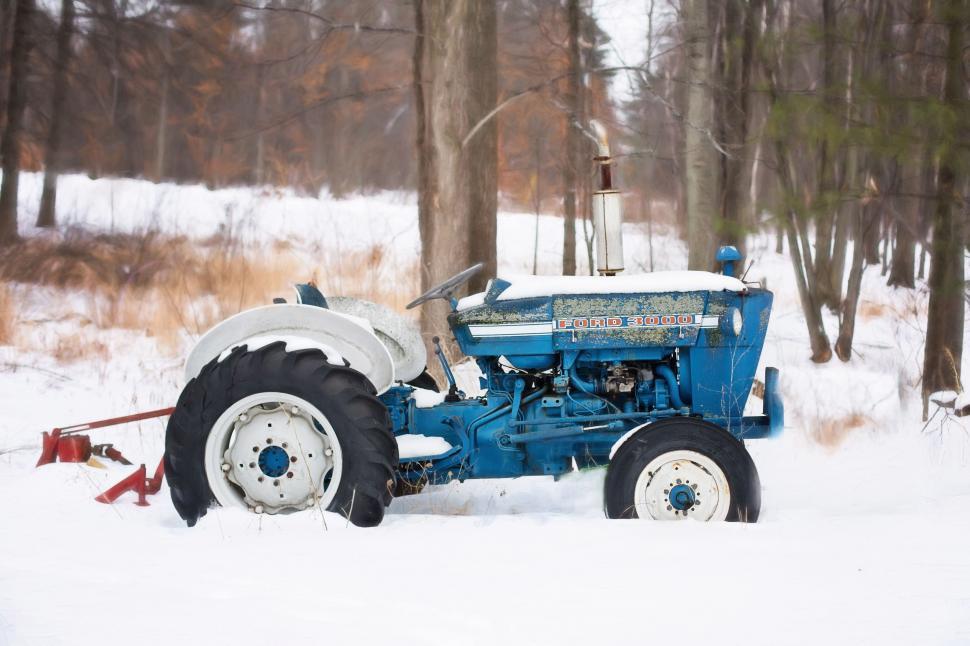As the temperatures begin to drop, the nights get longer, and you see your breath more and more in the morning, it’s time to start thinking of winterizing your tractor. Especially here in the Pacific Northwest, where temperatures drop below 0° in Lynden and Mount Vernon. Even in the Willamette Valley around Salem and Eugene, protecting your tractor from the rain and cold is an important step to help your tractor hibernate.

Step 1: Clean your Tractor
This is a good time to give your tractor a deep clean. Dirt and grime build up over time; cleaning your machine now will help to avoid rust and remove any potential debris that could foul your machine. Blowing out your radiator, for instance, can ensure debris doesn’t accumulate there. Then you want to powerwash your whole machine, removing any dirt or grime that has globbed on. Be aware of the grease points, as the powerwash can spread built-up grease around. A good de-greaser is WD40’s Specialist® Cleaner & Degreaser. Tractors are built to withstand the outdoors, but a little cleaning goes a long way in protecting them.
Step 2: Prep your Tractor
Once Spring has sprung, you want to get back on your tractor and back to work; to do that you need to make sure your machine is ready to run. Fuel, Oil, Filters, and Gaskets all need to be checked and replaced before you can be confident your machine will start up when you need it. When you winterize your machine, it’s a great time to bring your machine in for service. At BRIM, we offer discounts on Service and Parts at the beginning of Winter during our WINTER FIX Event, to get your machine ready. Or we offer Maintenance Kits so you can service your machine with genuine OEM parts.
Fuel Gelling is one of the biggest concerns when winterizing your machine. Diesel fuel can thicken or gel when it becomes too cold (below 10° Fahrenheit or -12° Celsius). This gelling can take time to warm up again, delaying your tractor from starting back up when you need it, so to avoid it you can do two things. Firstly, run a fuel stabilizer like Stanadyne through your tractor. You’ll want to add the stabilizer and then run your machine for 10-15 minutes. This will ensure the stabilizer reaches the fuel in the filters and lines. Keeping fuel in your tank over the winter can help to ensure rust or algae doesn’t develop in your fuel tank.
Remove your implement PTO shafts and store them inside; this ensures they do not rust or go missing. If possible, detach your loader bucket and tip it over, so water can’t accumulate. Or leave it tipped so water flows out. Spread grease over any exposed hydraulic rods to protect them so they will move in and out smoothly come Spring. Finally, if possible, keep your tractor in a garage or barn. An enclosed space will help keep the cold, wet, and wind from dropping the temperature.
Step 3: De-Power your Tractor
Your Tractor’s battery is the most susceptible piece of your tractor to the cold of winter. Modern batteries are better at keeping their capacity once the thermometer hits freezing, but they still lose 25% at freezing and up to 60% when below freezing. Without enough juice to turn the engine over, a frozen battery will keep you from getting back to work. Additionally, older batteries, left in the cold, can burst. A burst battery can damage your equipment and lead to a long cleanup. To avoid this, consider two options.
Option One: Disconnect the battery and store it in a warm place. The battery will lose charge (something like 1.5% a day) but nowhere near the amount if the battery is left out in the cold. Using a battery tender to keep the battery charged will give you peace of mind that the battery will be ready to fire. This ensures that the battery’s life is maintained and it’s ready come Spring.
Option Two: Run your machine once a month. This has the benefit of helping to keep your fluids moving and warm as well, but it certainly helps keep your battery charged and healthy. Running your machine for 10-15 minutes, once a month, will keep your battery in use (which is the optimal condition for a battery).
Simple steps for big savings
Winterizing your tractor helps to extend the life of your machine and its parts. Whether you live in the cold and clear eastern Oregon near Redmond, Christmas Valley, and Klamath Falls, along the mighty Columbia near Rainier, chilly Chehalis, or the peninsula of Sequim, your tractor will repay you if you take these 2 Steps to winterize your Tractor this year.

